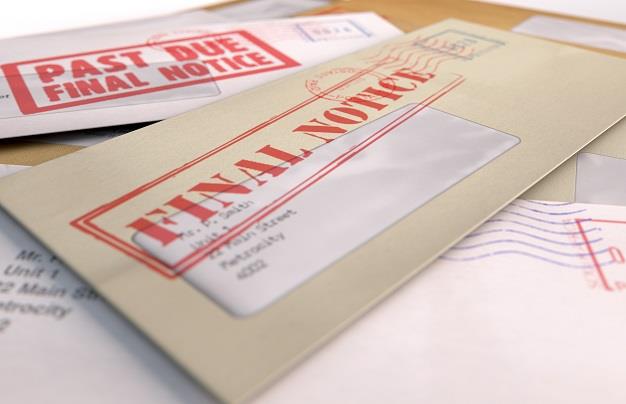In South Africa, insurance is not mandatory, leading to a significant portion of vehicles being uninsured. This situation has ramifications, such as inflated insurance premiums and a higher risk burden on fewer insured motorists. The economic downturn induced by the COVID-19 pandemic exacerbated this scenario, with many individuals prioritizing essential expenses over insurance premiums.

As insurers grapple with increased loss-of-income claims and dwindling clientele, they resort to various strategies to maintain competitiveness while mitigating risks. However, the insured public often remains unaware of critical issues influencing insurance claim repudiation, such as:
1. Crafted Policy Wordings: Insurers offering reduced premiums or incentives must carefully draft policy terms to stay competitive. This meticulous crafting can obscure coverage limitations, potentially leading to claim repudiation.
2. Reduced Coverage: Opting for lower-rate car insurance typically entails reduced coverage. This limitation increases the likelihood of claim rejection or inadequate compensation for losses incurred.
3. Recorded Conversations: Telephone insurance applications involve recorded conversations, which insurers may leverage to detect technical misrepresentations, thereby justifying claim repudiation.
4. Investigator Tactics: Insurers employ investigators to verify claims, often adopting aggressive interrogation tactics. This approach may make claimants feel accused and vulnerable to repudiation based on perceived dishonesty.
5. Information Disclosure: Claimants may unknowingly surrender privacy rights by authorizing investigators to obtain third-party information, potentially violating data protection laws.
6. Cooperation Pressure: Insurers may coerce cooperation by implying that claim validation hinges on full compliance, creating a sense of obligation among claimants.
7. Technical Inaccuracies: Honest responses to inquiries may inadvertently contain technical inaccuracies, which insurers can exploit to allege dishonesty and repudiate claims.
8. Appeal Challenges: Challenging claim repudiation through internal appeals or regulatory channels may yield limited success compared to legal recourse.
9. Legal Action Option: Claimants have the right to bypass internal appeals and approach legal avenues directly, potentially increasing the likelihood of favorable outcomes.
10. Legal Success Probability: While appealing directly to insurers or regulatory bodies is cost-effective, legal action offers higher success rates, particularly with strong merit.
11. Insurer Endurance: Insurers possess the resources to endure prolonged legal battles, dissuading claimants from pursuing litigation despite its potential benefits.
12. Protracted Resolution: Resolving disputes with insurers can span years, dispelling the notion of swift resolution through prolonged arguments.
13. Expert Assistance: Seeking assistance from insurance specialists or legal professionals immediately after a loss enhances the likelihood of successful claim resolution.
14. Legal Process Overview: Initiating legal action against insurers involves a structured process, necessitating comprehensive preparation and expert guidance.
While there are invariably insurers that still specialize in paying claims, understanding these intricacies is crucial for the insured public to navigate insurance claim processes effectively and mitigate the risk of repudiation. By being informed and proactive, claimants can safeguard their rights and pursue fair compensation for incurred losses.

If you face an insurance repudiation and decide to take your insurer to court to force them to pay your claim, you can expect the following steps to form part of that effort:
- Initiation of Legal Proceedings: The plaintiff (normally you) initiates legal proceedings by filing a summons in the South African High Court, detailing the accident particulars and the basis for the claim.
- Time Estimate: Varies, typically within a few days to weeks.
- Possible delays: The defendant may delay the legal process by contesting the validity of the summons.
- How your lawyer might respond: The plaintiff should ensure proper documentation and adherence to legal requirements to minimize grounds for contestation.
- Service of Summons: The plaintiff ensures proper service of the summons on the defendant (your insurer), following the procedures stipulated in Rule 4 of the Uniform Rules of Court.
- Time Estimate: Varies, typically within days to weeks after filing.
- Possible delays: The defendant may challenge the validity of the service, causing delays.
- How your lawyer might respond: Accurate record-keeping of service details and adherence to Rule 4 to withstand challenges.
- Defendant’s Response: The defendant, upon receiving the summons, files a notice of intention to defend in accordance with Rule 9 of the Uniform Rules of Court.
- Time Estimate: Within 10 to 20 days after service.
- Possible delays: The defendant may file a notice of intention to defend without engaging in substantive responses.
- How your lawyer might respond: Monitor timelines and, if necessary, request court intervention to expedite the process.
- Pleadings: Both parties exchange pleadings, including particulars of the claim and defense, as required by Rule 18 of the Uniform Rules of Court.
- Time Estimate: Varies, typically within a month after the notice of intention to defend.
- Possible delays: The defendant may provide vague or incomplete particulars, slowing down the exchange.
- How your lawyer might respond: Request clarification and utilize court procedures to obtain necessary information promptly.
- Insurance Repudiation Response: The plaintiff, in response to the defendant’s repudiation based on an expert report, addresses relevant facts and legal arguments in the pleadings.
- Time Estimate: Incorporated within the pleadings.
- Possible delays: The defendant may present complex legal arguments to complicate the plaintiff’s case.
- How your lawyer might respond: Engage legal counsel to navigate complexities and present a robust response.
- Request for Expert Report: The plaintiff formally requests a copy of the defendant’s expert report, aiming to comply with Rule 35(12) of the Uniform Rules of Court, which governs the discovery process.
- Time Estimate: Within a month after pleadings.
- Possible delays: The defendant may delay or refuse the release of the expert report.
- How your lawyer might respond: Invoke Rule 35(15) promptly to compel the release, minimizing delay.
- Denial of Expert Report: In the event of the defendant denying access to the expert report, the plaintiff may consider invoking Rule 35(15) of the Uniform Rules of Court, seeking a court order to compel disclosure.
- Time Estimate: Varies, potentially causing significant delays.
- Possible delays: The defendant may contest the application to compel disclosure.
- How your lawyer might respond: Vigorously pursue court orders, possibly seeking costs, to expedite the process.
- Compelling Release of Evidence: If necessary, the plaintiff applies to the court under Rule 35(15) to compel the defendant to release all evidence relevant to the case.
- Time Estimate: Variable, subject to court scheduling.
- Possible delays: The defendant may resist disclosure, leading to prolonged legal battles.
- How your lawyer might respond: Vigilantly pursue court orders and consider alternative legal avenues to compel disclosure promptly.
- Defendant’s Expert Appointment: Often, even before the repudiation, the defendant might have appointed an expert which they can disclose in accordance with Rule 35 of the Uniform Rules of Court, which allows for court-ordered expert evidence.
- Time Estimate: Variable, depending on the complexity of the case and the expert’s availability.
- Possible delays: The defendant may intentionally delay the expert appointment process.
- How your lawyer might respond: Monitor timelines, request updates, and utilize court intervention if necessary to ensure timely progress.
- Expert Collaboration: The expert for the plaintiff requests access to all evidence relied upon by the expert for the defense, facilitating collaboration and adherence to Rule 35(12) of the Uniform Rules of Court.
- Time Estimate: Varies, usually within weeks after the expert appointments.
- Possible delays: The defendant may withhold evidence crucial for expert collaboration, change agreements several times, or attempt to litigate through the joint report.
- How your lawyer might respond: Proactively address evidence withholding through court applications, emphasizing the need for collaboration, and record expert meetings.
- Refusal of Access to Records: If the plaintiff is refused access to relevant records, they may apply to the court for an order compelling discovery, as per Rule 35(15) of the Uniform Rules of Court.
- Time Estimate: Variable, subject to court scheduling.
- Possible delays: The defendant may resist the plaintiff’s access to records, citing irrelevance or intentionally over-simplifying the requests.
- How your lawyer might respond: Pursue court orders promptly, providing compelling arguments for the necessity of access, and make highly detailed requests for further discovery.
- Defendant’s Trial Posture: The defendant expresses an adamant stance on proceeding to trial, signaling an intent to contest the matter in court.
- Time Estimate: After completion of pre-trial procedures, potentially months.
- Possible delays: The defendant may create delays by contesting trial readiness.
- How your lawyer might respond: Engage the court to expedite trial readiness and counter any unjustified delays.
- Early Settlement Efforts: Despite the trial posture, the plaintiff engages in early settlement discussions, leveraging the work of their expert to emphasize the strength of their case.
- Time Estimate: Ongoing throughout the case.
- Possible delays: The defendant may refuse to engage in meaningful settlement discussions.
- How your lawyer might respond: Present compelling arguments for settlement, possibly involving court-sponsored mediation to encourage cooperation.
- Post-Trial Procedures: Both parties adhere to post-trial procedures, including any appeals or enforcement of judgments, in accordance with the Uniform Rules of Court.
- Time Estimate: Post-trial, duration varies based on any appeals or enforcement actions.
- Possible delays: The defendant may contest post-trial procedures.
- How your lawyer might respond: Vigorously pursue post-trial procedures, utilizing court mechanisms to overcome any resistance.
While this is not an exhaustive outline of the legal procedures that need to be followed, and while it cannot be regarded as legal advice, it is shared in the hopes that readers would get a better idea of the process that lies ahead of them, should they decide to sue their insurer.
While this is not an exhaustive outline of the legal procedures that need to be followed, and while it cannot be regarded as legal advice, it is shared in the hopes that readers would get a better idea of the process that lies ahead of them, should they decide to sue their insurer.
This whole process might take as long as two or more years. Insurers know this and might rely on you suffering from combat fatigue.
Combat fatigue, in the context of legal proceedings, refers to the mental, emotional, and financial exhaustion experienced by a party during protracted and challenging litigation. It occurs when the cumulative stress, delays, and resource demands of the legal process become overwhelming, impacting a party’s ability to effectively participate in the case.

Strategies insurers could use to Induce Combat Fatigue (Defendant’s Perspective):
- Delay Tactics: Deliberate delays in responding to legal actions, filings, or requests can prolong the proceedings.
- Complex Legal Maneuvers: Introduce complex legal arguments or procedural challenges to complicate the case, potentially causing frustration.
- Refusal to Cooperate: Resist collaboration, deny access to crucial documents, and withhold information, forcing the plaintiff into prolonged legal battles.
- Frequent Legal Challenges: File numerous legal challenges, motions, or appeals to divert the plaintiff’s attention and resources.
- Financial Pressure: Exploit financial vulnerabilities by prolonging the case, forcing the plaintiff to incur escalating legal costs.
- Strategic Settlement Offers: Resending settlement offers strategically, aiming to exhaust the plaintiff’s willingness to continue the legal fight.
- Changing Legal Counsel: Introduce changes in legal representation to disrupt continuity and prolong the adaptation process for the plaintiff.
- Information Overload: Flood the plaintiff with extensive information and documentation, potentially overwhelming their legal team.
- Emotional Toll: Employ aggressive tactics, personal attacks, or emotional manipulation to wear down the plaintiff’s resolve.
- Selective Cooperation: Appear cooperative selectively, causing the plaintiff uncertainty and frustration in determining the defendant’s true intentions.

Guarding Against Combat Fatigue (Plaintiff’s Strategies):
- Legal Support Network: Establish a robust legal support network to share the workload and provide emotional support during challenging periods.
- Strategic Resource Allocation: Allocate resources judiciously and strategically to combat financial strain induced by prolonged proceedings.
- Proactive Case Management: Implement proactive case management strategies, such as efficient document organization and systematic evidence gathering, to counter delays.
- Regular Communication: Maintain regular and clear communication with legal counsel to stay informed and engaged throughout the process.
- Mental Resilience: Develop mental resilience by understanding that legal battles can be protracted, and setbacks are part of the process.
- Strategic Settlement Evaluation: Evaluate settlement offers critically, considering both short-term relief and long-term consequences before making decisions.
- Documentation and Record-Keeping: Maintain meticulous documentation and record-keeping to counter information overload and facilitate organized legal responses.
- Awareness of Legal Maneuvers: Stay informed about potential delay tactics and complex legal maneuvers, allowing for better preparation and response.
- Alternative Dispute Resolution: Explore alternative dispute resolution methods, such as mediation or arbitration, to potentially expedite resolution outside of court.
- Legal Cost Management: Implement effective cost-management strategies, potentially including insurance coverage, to mitigate financial strain induced by the legal process.
By adopting these proactive strategies, plaintiffs can guard against the adverse effects of combat fatigue, ensuring that they remain resilient and well-prepared throughout the often protracted legal proceedings.

In facing the daunting prospect of challenging insurers in court to secure rightful compensation for damages, remember this: you are not alone in this battle. As you navigate the intricate legal landscape, fraught with delays and challenges deliberately imposed by insurers, envision yourself as the David confronting the Goliath of the insurance industry. Your faith, commitment, and unwavering honesty in every action you take will serve as the stones that could ultimately slay this Goliath.
Though the road ahead may seem arduous, remember the potential impact of your trial outcome. Your perseverance could set a precedent, not only securing justice for yourself but paving the way for countless others who may find themselves in similar circumstances. Your trial could become a beacon of hope for those who follow in your footsteps, challenging the status quo and holding insurers accountable for their obligations.
Remain steadfast in your resolve, knowing that each step you take towards trial is a step towards justice. Embrace the support of your legal team and allies, drawing strength from their expertise and encouragement. While the journey may test your patience and resilience, stay positive and focused on the ultimate goal of achieving fair compensation.
Through determination, honesty, and a strategic legal approach, you have the power to overcome the adversities posed by insurers and emerge victorious. Your trial could be more than just a personal pursuit for justice—it could be a catalyst for change, shaping the landscape of insurance claim resolution for years to come. So, stand tall, face your Goliath with courage, and let your trial be a testament to the triumph of justice over adversity.
